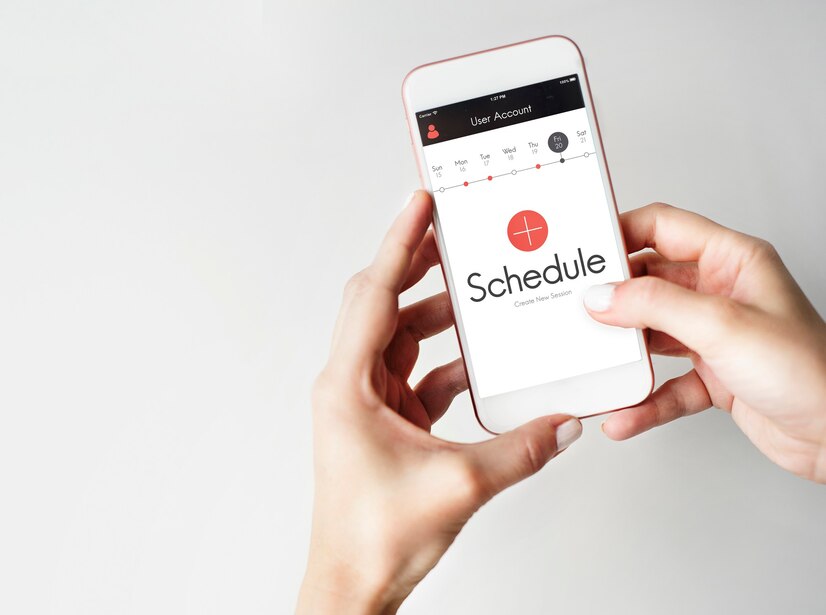Time blocking is a powerful productivity technique used by top performers—from CEOs to creatives—to take control of their schedules and maximize focus. Unlike traditional to-do lists, time blocking requires assigning every task a dedicated slot on your calendar, turning intention into action. And with digital calendars, mastering this technique has never been easier.
In this guide, we’ll reveal the secrets to using digital calendars to time block effectively, so you can get more done with less stress—and protect your most valuable resource: your time.
What Is Time Blocking?
Time blocking is the practice of dividing your day into blocks of time, each assigned to a specific task or type of work. Rather than reacting to tasks as they arise, you proactively plan your day, batching similar activities and building in time for deep work, breaks, and even distractions.
Key benefits:
-
Minimizes multitasking
-
Boosts focus and flow
-
Reduces decision fatigue
-
Helps align tasks with goals
Why Use a Digital Calendar?
Digital calendars like Google Calendar, Outlook, Apple Calendar, and tools like Fantastical or Timepage bring time blocking to life by offering features that paper planners can’t match.
Advantages include:
-
Drag-and-drop rescheduling
-
Color-coded event types
-
Cross-platform syncing
-
Calendar sharing with teams
-
Notifications and reminders
Secrets to Mastering Time Blocking
1. Create Time Themes or Categories
Assign themes to your days or parts of the day to reduce decision fatigue and increase consistency.
Examples:
-
Mornings for deep work or writing
-
Afternoons for meetings and admin
-
Fridays for planning and review
-
Evenings for learning or personal growth
How to do it:
Use calendar colors or labels to visually group task types. Most digital calendars allow custom colors for events.
2. Use the 80/20 Rule
Focus on the 20% of tasks that bring 80% of the results. Block those tasks first.
Tips:
-
Schedule your most valuable work during your peak energy hours
-
Reserve blocks early in the day for high-focus tasks
Tool tip: Use Google Calendar’s “Goals” or create recurring events for your key 20% priorities.
3. Set Realistic Time Blocks (With Buffers)
Don’t overestimate how much you can do. Always include time for breaks, overflows, and transitions.
Best practices:
-
Leave 15–30 minute gaps between major blocks
-
Include “white space” for spontaneous tasks or decompression
-
Use recurring 5-minute “reset” breaks after intense sessions
Pro tip: Tools like Clockwise or Motion automatically add buffer time when they detect calendar overload.
4. Batch Similar Tasks Together
Switching tasks wastes mental energy. Batching similar tasks keeps your brain in the same mode.
Example batches:
-
Admin and email in one block
-
Creative work in another
-
Calls and meetings grouped back-to-back
Try this tool:
Sunsama or Akiflow lets you pull in tasks from different apps and drag them into your calendar for batching.
5. Protect Your Deep Work Blocks
Schedule blocks for focused, uninterrupted work—and treat them like non-negotiable meetings.
Tips:
-
Mark these blocks as “Busy” on your calendar
-
Silence notifications and close unnecessary tabs during deep work
-
Use Focus Modes (macOS/iOS) or Do Not Disturb
Tool suggestion:
Use Reclaim.ai to auto-schedule deep work blocks around meetings.
6. Plan Weekly, Adjust Daily
Time blocking works best when it’s both strategic and flexible.
Weekly routine:
-
Every Sunday or Monday, block out your week based on top goals
Daily check-in:
-
Each morning, review your calendar and make adjustments
Bonus tip: Use voice assistants like Siri or Google Assistant to add or adjust calendar events hands-free.
7. Use Templates or Routines
Save time by creating reusable blocks for recurring tasks.
Ideas:
-
Morning routine block
-
Weekly team meeting
-
End-of-day review block
Tool tip:
Apps like Notion or ClickUp can integrate with your calendar to create repeatable workflows.
8. Reflect and Improve
At the end of each week, evaluate what worked and what didn’t. Adjust your blocks accordingly.
Ask yourself:
-
Did I stick to my deep work blocks?
-
What caused the most interruptions?
-
Where did I overbook or underestimate time?
Tool to try:
Toggl Plan or RescueTime can show you where your time actually went and help refine your blocks.
Time blocking with digital calendars is more than just scheduling—it’s about taking ownership of your time, energy, and focus. With thoughtful planning and the right tools, you can reduce overwhelm, make room for what matters most, and finally feel like you’re running your day—instead of your day running you.

